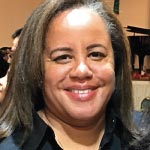RETIREMENT BOARD ELECTION
Police Officer Brian Stansbury won the open seat on the CCSF Retirement Board. After a hard fought campaign, Brian, a most dedicated campaigner, received 53% of the votes cast. Congratulations Brian. Your fellow police officers were proud of the vigorous efforts you made to capture this important position. As a Retirement Board commissioner, Brian will now make important decision regarding the $15.9 billion trust fund focusing on growing the fund to a 100% asset market value status thereby allowing supplemental colas to again be paid to retirees as well as keeping a tight lid on the contribution rates paid by active members and the city.
S.F. GRAND JURY CALLS THE RETIREMENT SYSTEM’S
INVESTMENT PORTFOLIO “DANGEROUSLY RISKY”
Q. Mike, I recently read that the City’s Grand Jury has issued a stinging report on the investment policies used by Retirement Board. Should I be concerned? Does this effect the safety of my monthly pension benefit?
A. For the fourth time in five years, the SF Civil Grand Jury has “shined a light” on the SF Employees’ Retirement System.” This time, the Grand Jury focused on the investment policies and practices of the System and judged them to be of a nature to “expose the Fund to further disastrous losses in the future.” You should not be concerned; this report does not, in my judgment, affect the safety of your monthly pension benefit.
The Grand Jury complained that the 7-member Retirement Board was engaged in “herd mentality” for utilizing the “Yale Model” of investing “which it followed in the mid-1980’s after public funds were allowed to invest in high-risk investments.” The report noted that Yale University was “one of the first institutional investors to participate in high-risk investing, and their method for beating the market with high returns became a model for many other funds.” The Yale Model calls for the use of alternative investments, foreign stocks, foreign bonds, real estate limited partnerships, commodities, venture capital, private equities and distressed debt, in order to achieve performance results that would far outpace a portfolio of just bonds or just bonds and US equities.
Most unfortunately the Grand Jury failed to look into the superior long-term performance results that have been obtained by “the Ivies” (Yale and Harvard) following this well diversified method of investing. These investment endowments have such an outstanding record that, in my judgment, it would been a breach of the Retirement Board’s fiduciary duty not to utilize the “Yale Model.”
The Grand Jury noted that the Retirement System’s trust fund “sank from a high of $17.4 billion in 2007 to a low of $11.1 billion in 2009.” At the time their report was issued (June 2012) the Fund was valued “at approximately $15 billion.” But see the below chart showing the SFERS Monthly Assets over the last 5 years. While there was a steep decline (actually the worse since the Great Depression era of 1929 – 1939), during the “Great Recession of 2008-2009,” the trust fund has been making steady progress and is now valued at $15.9 billion. This is nearly a $1 billion improvement in the four months since the Grand Jury issued its report.
My point is this. The Grand Jury simply chose to focus on the fiscal years ending June 30, 2010 and June 30, 2011 from which it issued its very critical report. Our trust fund is expected to pay benefits for a very, very long time (for as long as there are CCSF retirees). The fund has been paying benefits for over 100 years. Short term fluctuations are expected and planned for. To judge investment results and investment policies on a one to five year period is hopelessly flawed and myopic.
We are all hoping that the trust fund performance continues to make steady progress so that it achieves a 100% funding ratio both on an actuarial value of assets and on a market value of assets. Achievement of these goals will reduce the active employee/city contribution rates and allow retirees to again receive an annual supplemental COLA.
The CCSF Retirement fund’s earnings for FY 2011-2012 was 1.67% comparable to the California State Teachers (CalSTRS) 1.65% and the California Public Employees’ Retirement System (CalPERS) at 1.0% for the same period. As of June 30, 2011 the trust fund had achieved a market value funding of 84%; for that same period the funded status of pension plans sponsored by Standard and Poor’s 1500 companies was at 75% - a favorable disparity not commented upon by the Grand Jury.
The Retirement Systems’ response will soon be issued and I will report on it. A copy of the Grand Jury’s report can be found online at www.sfsuperiorcourt.org/general-info/grand-jury.
SUPPLEMENTAL COLA FOR FY 2012-2013
Q. Mike, I retired on June 30, 2012. I receive the basic cost of living adjustment (COLA) of (2%) for fiscal year 2012-2013. Do you think that I will receive a supplemental COLA for this same period?
A. NO! There are two reasons that you will not receive a supplemental COLA in FY 2012 – 2013. First, there is the issue of Proposition C (November 2011) which prohibits the payment of a supplemental COLA from July 1, 2012 onward until the Retirement System’s investment fund is at 100% based on market value. The System’s funding ratio (market value) when last reported upon (July 1, 2011) was 83.9% - this is a long way from the required 100 %. It is my current best estimate that the Retirement System will not reach 100% market value funding until 2017 at the earliest. And therefore, absent successful litigation by the retirees’ organization Protect Our Benefits, no supplemental COLA will likely be paid for the next 5 years.
Second, there will be no supplemental COLA for 2012-2013 because there are no excess earnings with which to pay a supplemental COLA. Remember that the Retirement System must earn in excess of 7.666% to pay this COLA. As of June 30, 2012, the System’s fiscal-year earnings were 1.67%.
TAKING DISTRISBUTIONS FROM YOUR DEFERRED
COMPENSATION PLAN AND FROM DROP
Q. Mike, I retired two years ago having completed DROP. I transferred my DROP monies into my 457 deferred compensation plan administered by Great West. My Great West account executive has helped me, over the years, construct a diversified portfolio appropriate for my age and investment risk tolerance. I am 61 years of age; my wife is six years’ younger. How much can I safely withdraw from my 457 plan so that money is available for my wife should I be the first of us to die? I want to start withdrawing immediately to contribute to my prosperous retirement.
A. I believe that you could safely, on an annual basis, withdraw all interest and dividends (but not capital gains) earned plus the IRS’s required annual minimum distribution (RMD) for tax deferred retirement plans. See the attached chart, issued by the IRS, for annual withdrawal percentages. The annual withdrawal percentage becomes required during the calendar year in which you reach age 70 ½. I am suggesting that you begin withdrawals immediately using 3.13% for ages 60 through 65 with adjustment every year thereafter as shown in the chart, plus the annual interest and dividends. Remember that the annual percentage is determined on that amount remaining after the annual interest and dividends have been determined.
I applaud your prosperous retirement goal as well as your goal of making sure that monies are available for your wife to continue to do so should you die first. The traditional rule of thumb has been to withdraw a fixed percentage (usually 4%) of your initial retirement savings with annual upward adjustments for cost-of-living considerations. The advantage of the 4% rule (fixed percentage) is that the retiree has a low probability of running out of money. The downside is that such a rule does not permit retirees to periodically adjust consumption in response to investment returns. For example, if returns are less than expected (as has certainly happened in the last decade) in a given year, the retiree should respond by reducing consumption to preserve assets – a fixed 4% withdrawal is not consistent with such flexibility.
Managing retirement wealth involves a trading off the enjoyment of spending one’s assets on consumption (and/or gifting) against the risk of spending too much and prematurely depleting one’s resources. My suggestion will allow you to get greater consumption at a younger age so as to enjoy your prosperous retirement. And it will leave plenty for your wife to enjoy.

